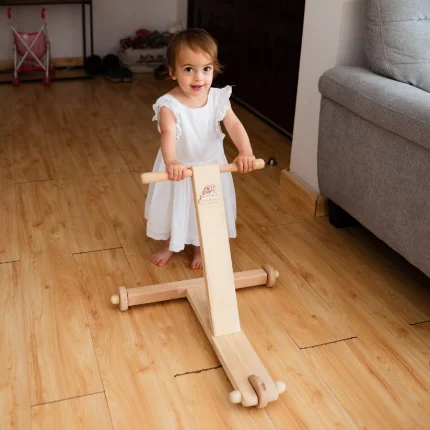A consistent bedtime routine can make a world of difference for babies and toddlers. This guide offers simple, practical steps to help parents establish a soothing bedtime routine, with tips on winding-down activities, calming cues, and creating a peaceful environment to promote restful sleep.
The importance of routine in child sleep patterns
Establishing a bedtime routine is crucial for a child’s healthy sleep habits and overall well-being. Here’s why routines matter and how they benefit babies and toddlers:
- Encourages predictability and security: Babies and toddlers thrive on routine. When they know what to expect each night, they feel more secure, which helps them settle down faster. A predictable sequence of calming activities signals that bedtime is near, creating a sense of safety.
- Regulates sleep patterns: Consistent bedtime routines help synchronize a child’s internal clock, making it easier for them to fall asleep and wake up at roughly the same time each day. This regularity is essential for a child’s growth, mood, and development.
- Reduces resistance to sleep: For toddlers, bedtime resistance is common. A routine that includes enjoyable, calming activities can ease the transition from playtime to sleep, reducing potential struggles. Repeating these steps each night helps children understand that it’s time to wind down.
- Promotes long-term healthy sleep habits: Establishing a bedtime routine early can set the stage for lifelong healthy sleep habits. Children who grow up with structured sleep patterns are more likely to continue these practices as they grow older.
Activities to help kids wind down
The hour before bed is an ideal time to engage in calming activities that encourage relaxation. Here are some effective ways to help babies and toddlers unwind:
- Warm bath or gentle wash-up: A warm bath can be incredibly soothing, especially when paired with gentle, soft-spoken interactions. If a bath isn’t part of your nightly routine, a simple wash-up with warm water can still provide a calming effect.
- Massage with baby-safe lotion: A light massage using a gentle, baby-safe lotion can be a great way to help your child relax. This comforting physical contact can relieve tension and foster a strong bond, especially for babies. For toddlers, even a gentle back rub can work wonders.
- Quiet storytime: Reading a short, soothing story is a perfect wind-down activity for toddlers. Choose books with simple, calming themes and use a soft, quiet voice to encourage relaxation. Babies can also benefit from storytime, as they find comfort in the familiar rhythm of your voice.
- Lullabies or gentle music: Soft lullabies or calming white noise can provide a peaceful background that soothes children to sleep. Gentle, repetitive sounds signal to babies and toddlers that it’s time to rest, helping to mask household noises that could disrupt sleep.
- Breathing exercises (for toddlers): Simple breathing exercises can help calm toddlers and reduce any pre-sleep jitters. A quick breathing game, where you breathe slowly and deeply together, can be a fun and effective way to ease into bedtime.
Creating a soothing environment for better sleep
The sleep environment plays a critical role in helping babies and toddlers fall asleep faster and stay asleep longer. Here’s how to create a serene, sleep-friendly space:
- Dim the lighting: Bright lights can stimulate a child’s senses and make it harder for them to relax. Switch to dim lighting, like a nightlight or lamp with a soft glow, at least an hour before bed. Darkness helps stimulate melatonin, a hormone that signals the body it’s time to sleep.
- Keep the room cool and comfortable: Babies and toddlers sleep better in a room that’s cool but comfortable. An ideal temperature is around 65–70°F (18–21°C). Consider breathable, comfortable sleepwear and bedding, and adjust according to your child’s preferences.
- Limit stimulation: As bedtime approaches, it’s best to avoid stimulating activities, especially screen time. The blue light from screens can interfere with sleep and make it harder for children to unwind. Instead, opt for low-key, soothing activities like storytelling or gentle rocking.
- Incorporate sleep cues: Small sleep cues help signal to children that bedtime is approaching. These can be as simple as turning on a specific lullaby, switching on a nightlight, or saying a specific phrase each night, like “It’s time to rest now.” Consistent cues help reinforce the bedtime routine.
- Use comfort items (if desired): For toddlers, a favorite stuffed animal or cozy blanket can provide comfort and security, helping them transition into sleep. Be sure that comfort items are age-appropriate and safe for sleep.
Conclusion
A calming bedtime routine can make all the difference in your child’s sleep quality, supporting better rest and happier mornings. By creating a predictable, soothing series of activities and an environment that encourages relaxation, you can ease the bedtime transition and set your child up for a peaceful night’s sleep. As with any routine, consistency is key. Over time, these small steps will become a treasured part of your child’s daily rhythm, building healthy sleep habits that can last a lifetime.




 Blue
Blue  Red
Red  Yellow
Yellow 

































